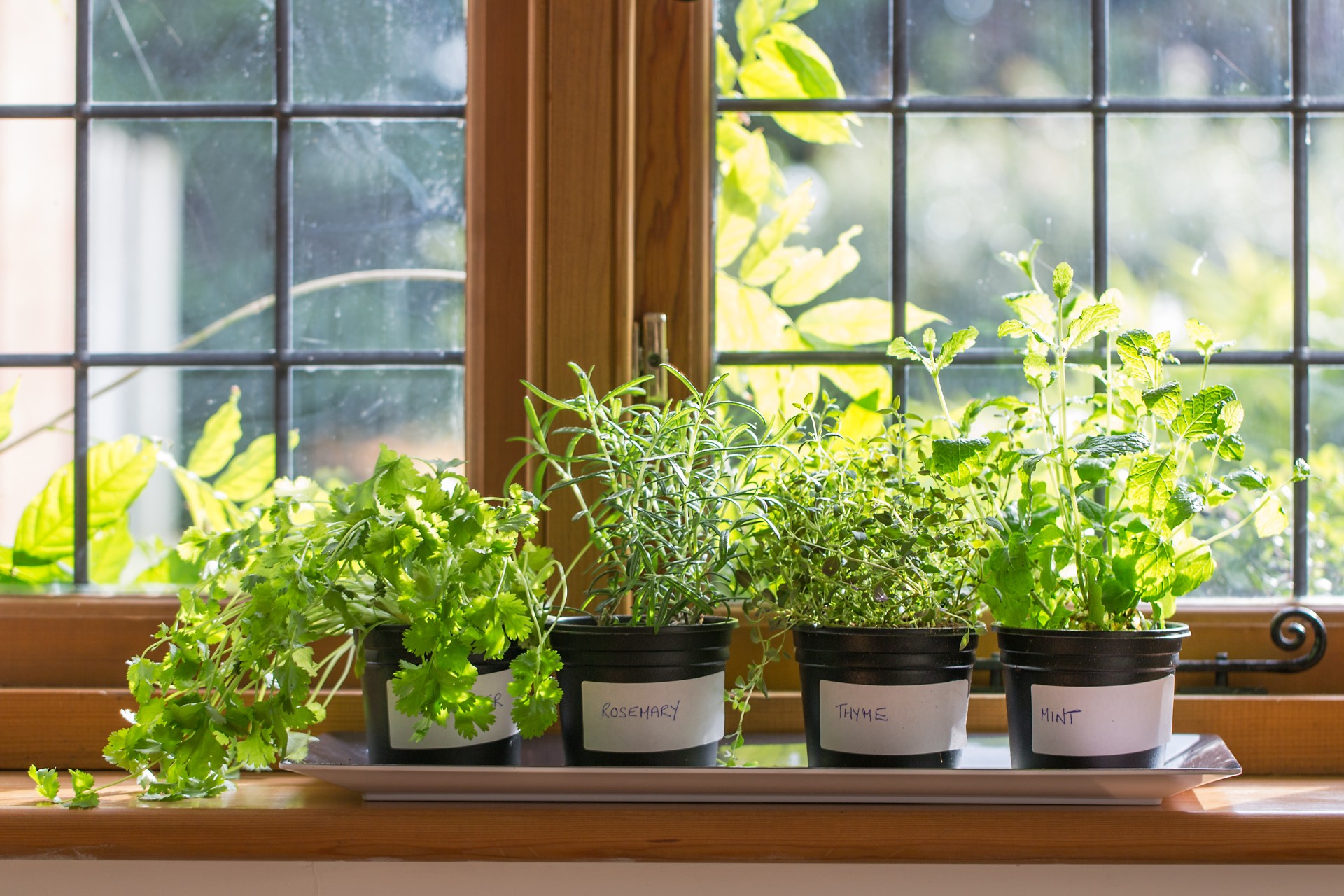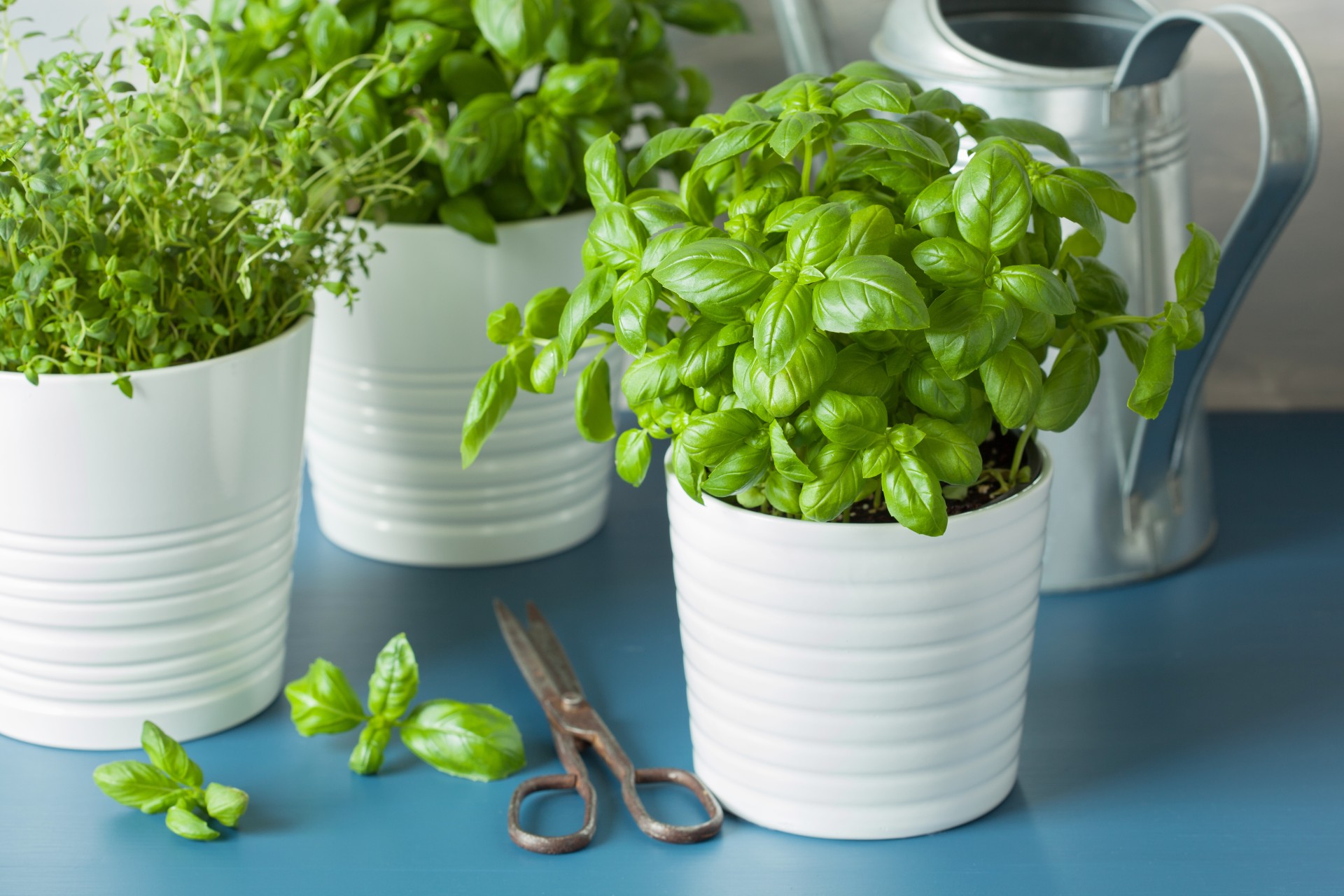When you’re starting your journey into gardening, you’re probably wondering how to keep herbs alive indoors. Water and sunshine are the short answer. But there’s more to it than that. Every garden lover worries about the lifespan of their plants, no matter how experienced they may be. Is It better to pot outside? Is sunlight the best option versus fluorescent light? How about the temperature? Which plants like warm weather the most?
While the questions are many and there are no definitive answers, it is possible to keep your herbs alive all year long with some extra care beyond sunlight and watering. Here are our best tips on how to keep herbs alive inside your home throughout the year.
Can you keep herbs indoors?

Yes, you can. And when you do, you get to enjoy fresh herbs throughout the year. One step before starting your herb garden is to decide which herbs are the best to grow indoors. The most popular herbs to grow inside your own kitchen are:
- Basil
- Rosemary
- Cilantro
- Chives
- Oregano
- Parsley
- Sage
- Thyme
- Mint
It’s best to start with a few of your favorite herbs while you gain more experience. Once you feel more comfortable with your indoor garden, it’s easier to grow others herbs.
How often should you water indoor herbs?
A basic tip for indoor herbs is to check them daily and never allow them to dry out. At the same time, you also want to avoid over-watering them. Choose a container with holes to drain excess water. If you let the herbs sit on waterlogged soil, it could cause them to die.
When unsure, simply test the soil by inserting your finger. If the soil feels dry about 2 inches below the surface, it’s time to water.
What kind of light does an indoor herb garden need?
The more light you can give to your indoor herb garden, the better results you’ll get. The intensity of the light is key to develop robust flavors and fragrant aromas. Herbs with strong light have the best flavors.
Remember that herbs need eight hours of sunlight from a direct source, like a window. If your windowsill is not large enough to accommodate your pots, place a small table in front of it.
In some cases, you’ll need to supplement with artificial light, which means you’ll need to double the time of exposure. One hour of direct sunlight is equivalent to two hours of fluorescent light.
Can you leave herbs outside?
It’s a good idea to take your pots outdoors at list once a week. Never let your plants’ air become stagnant. Fresh air is healthy for your indoor herb garden, as good ventilation avoids the spread of diseases.
But when you take your plants outside, don’t forget that they don’t like the cold weather. Herbs prefer a comfortable temperature between 60° to 70 F°. Avoid the early morning weather and choose the sunny afternoon instead.
Tips to preserve your herb garden during cold months

Here are some basic steps you can follow to make sure your indoor herb garden stays fresh during the winter:
- Practice frequent pruning to help it propagate.
- Place cuttings’ roots in water to prepare replanting.
- Use fluorescent lights for fastest growth and bigger yields.
- Keep your plants protected from the morning cold by placing them indoors.
With 12 hours of light and warm soil, your herbs have more chances of surviving the winter months indoors. Whether you use exclusively natural light or supplement with artificial bulbs, remember to drain any excess water.
Even though herbs can live indoors all year long, the reality is that many of these beautiful herbs are annual. Plants like basil, oregano, and mint can extend their life cycle with a little extra care from you. When you follow these tips, you increase the chances of a successful indoor garden. Keeping plants alive in your home is a rewarding experience that also allows you to enjoy your favorite herbs and their health benefits throughout the year.
Editors' Recommendations
- Beyond basil and cilantro, add these unique plants to your indoor herb garden
- Here’s how often you should be fertilizing your indoor plants
- Wondering how to water succulents? Here are the best succulent watering tips
- Use these tips to start a successful indoor vegetable garden this winter
- Grow these herbs for Halloween to make your celebration even spookier



